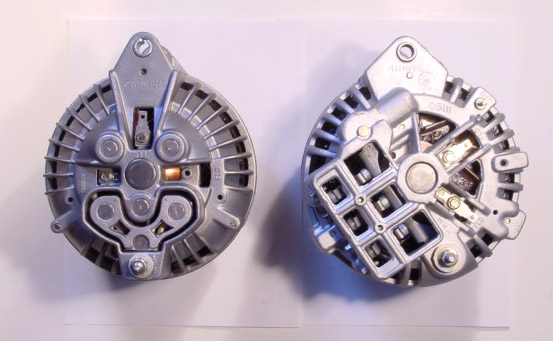Make a couple of "quick checks" and if need be we'll get deeper from there
1--Make absolutely sure the regulator is grounded. Scrape the mount/ flange clean and use star washers.
2--Work the regulator connector in/ out several times, and visually inspect for corrosion, other damage.
3--Key on, engine off, use a test lamp or meter to check the blue wire connected to one of the two field wires. Should get a bright light / same as battery voltage.
4--Remove green field wire at alternator, use a clip lead to ground the disconnected alternator terminal. In dim light you should be able to see a small spark as you connect/ disconnect the wire
5--Start the engine, bring up RPM and see if it shows a charge. If it does, you either have a wiring problem in the regulator circuit, or a bad regulator.
If it does not charge, and if you DID notice a spark at the field, hook a voltmeter to the alternator output stud. With the engine running fast, the voltage should be up around 14, but not really high. If voltage is really high, way over 16--20, etc, you have a bad connection in the alternator main output wire in the path to the battery.
If voltage is low, "same as battery" regardless of RPM, you most likely have a bad alternator.
Simplified diagram below:
The "I" terminal of the regulator receives switched 12V ignition voltage, the green wire from the regulator to the alternator controls "the amount of ground" at the alternator field
When you remove the green (F) wire and ground that alternator field terminal, you are causing full field current to flow from the ignition (blue field) through the field magnet, to ground (clip lead in place of green wire)


















